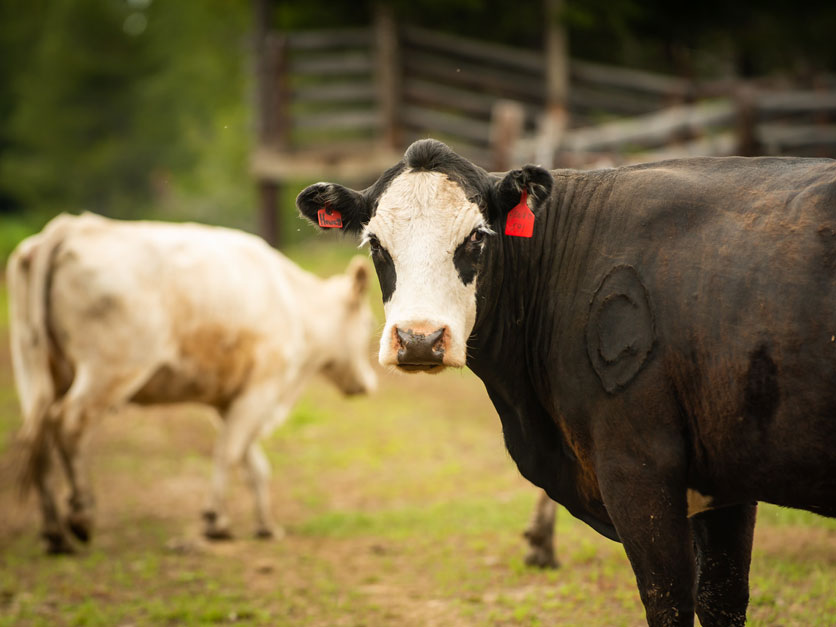A hearing called to explore beef price transparency issues highlighted some possible changes, but senators also heard a good deal of defense for the current system.
Five witnesses representing producer groups and different academic and economic viewpoints all agreed in their testimony to the Senate Ag Committee that price disparities between producers and beef packers are high; the question was whether there is something wrong that needs to be corrected.
“Both the direction and magnitude of the price spread are well within the range of expectation,” Rabobank animal protein analyst Dustin Aherin told senators. “Like many businesses, the pandemic has created enormous challenges for cattle producers; seeing the price difference between cattle and beef has only added to that emotional strain.”
But Justin Tupper, a South Dakota rancher and auctioneer who is the vice president of the U.S. Cattlemen’s Association, argued that producers are being forced to bear a disproportionate amount of market risk.
“I don’t disagree that there are cycles,” he said. “But as we look back through the history of the cycles, how many farms and ranches and how many small feedlots do we have to lose every time we go through a cycle because ‘it’s just another cycle?’”
The issue of price disparity is not a new one, although recent events like the COVID-19 pandemic, a fire at a Kansas packing plant, and the JBS cyberattack have intensified producer concerns and gotten the attention of Congress. Many in the industry have pointed to the events and disparate impacts as evidence of a need for more price transparency in the industry.
Arkansas Sen. John Boozman, the panel’s top Republican, said there is some agreement that producers would benefit from a more transparent marketplace but no consensus yet on how to do that.
Some lawmakers are pushing to mandate an amount of cash trade that has to take place either nationally or in regional beef markets. But witnesses also cautioned against that approach, said that could backfire on the industry. Kansas State livestock economist Glynn Tonsor said he and his fellow economists “haven’t quantified those costs very well yet.”
“I get concerned when we add rigidity to a system and we get in the way of people being entrepreneurs and doing things a little bit differently,” he said. “Any kind of government mandate gives me that pause.”
Instead, many in the industry like Mark Gardiner, who also testified at the hearing, argue in favor of alternative marketing agreements, which allow for value-added payments based on quality and other factors.
Gardiner said AMAs have been beneficial for his operation as well as U.S. Premium Beef, a producer group he chairs. What’s more, he argued a mandate could lead to restrictions on producers as well as packers.
“If I want to hit these targets, who’s going to tell me I have to sell cash or I have to sell this other way?,” he asked. “The unintended consequences have challenges for all of us.”
Interested in more news on farm programs, trade and rural issues? Sign up for a four-week free trial to Agri-Pulse. You’ll receive our content - absolutely free - during the trial period.
Iowa GOP Sen. Chuck Grassley, who has introduced legislation that would mandate additional cash marketing of cattle, pushed back on that line of thinking.
“We’ve got one witness that says we have a cozy setup, don’t pass any laws to affect any of that cozy setup; that isn’t going to work for the farmers in my state,” he said. He didn't specify which witness he was discussing.
Tupper also said producers could still utilize AMAs if more cash trade happened in the beef industry, arguing the added value of the agreement would be even greater with a higher price floor.
There was, however, a measure of agreement on the benefit a contract library would offer to the beef industry. That proposal is included in some current legislative proposals as well as a list of action items currently being developed by a group of producer organizations.
It's not clear what the committee will do next. USDA's livestock price reporting program needs reauthorization by the end of September and could prove to be a legislative vehicle for new regulations, if senators can agree on what they should be.
After the hearing, Chairwoman Debbie Stabenow, D-Mich., acknowledged there appeared to be a lack of consensus, but said there was “a lot of concern … from committee members.”
“Today’s the first step, and then we’ll talk to members and see," she told reporters.
For more news, go to www.Agri-Pulse.com.


